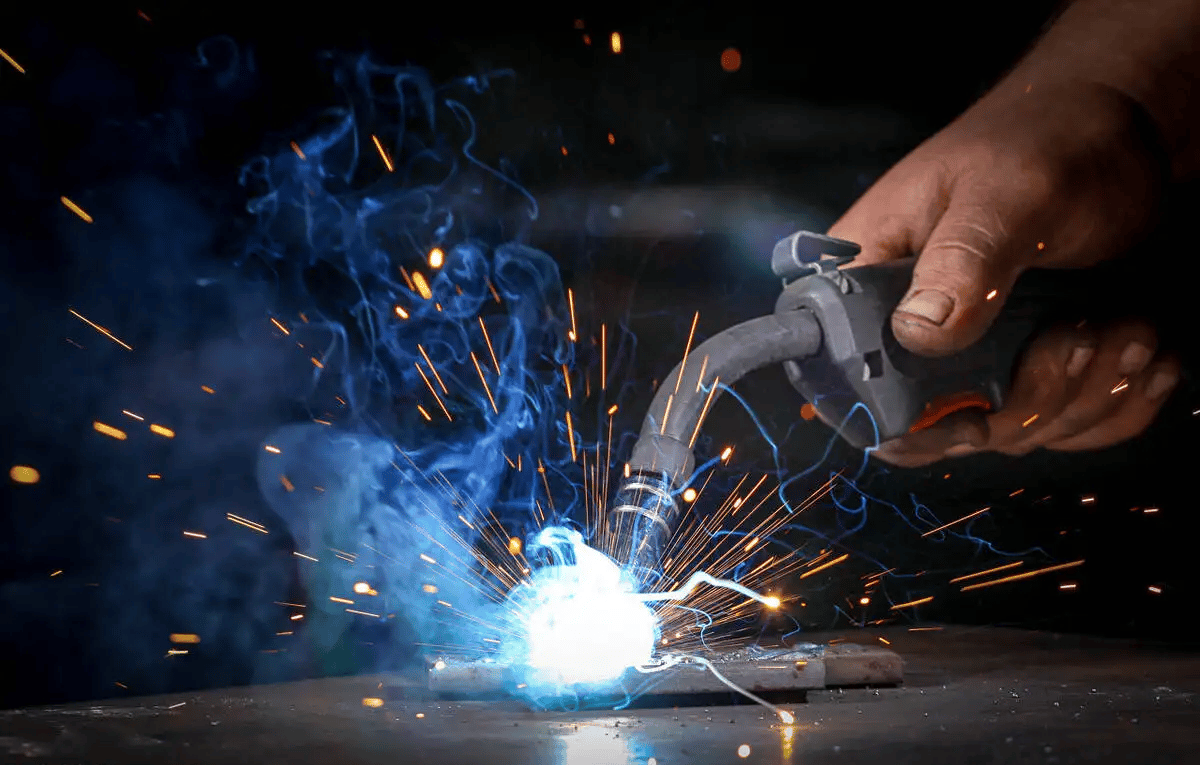Important Tips for Effective Welding Inspection Racine Services
Ingenious Strategies to Fillet Weld Assessment and Testing: Enhancing Weld Top Quality and Compliance Criteria
In the realm of welding, the top quality and honesty of fillet welds play a vital function in ensuring the structural strength and integrity of various industrial components. With the constant drive for improved effectiveness and conformity with strict requirements, the exploration of cutting-edge strategies to fillet weld evaluation and testing has actually become vital.
Advanced Non-Destructive Screening Approaches
Using state-of-the-art modern technologies, advanced non-destructive screening approaches play an essential role in ensuring the honesty and quality of fillet welds. These approaches, such as phased array ultrasonic screening (PAUT) and magnetic particle testing (MPT), deal in-depth insights into the weld's inner framework without triggering any type of damage to the material. PAUT, as an example, makes use of numerous ultrasonic aspects to evaluate the weld from various angles, giving an extensive visualization of prospective flaws like lack of combination or splits.
By employing these innovative non-destructive screening techniques, weld examiners can accurately analyze the high quality of fillet welds, guaranteeing conformity with sector criteria and laws. The capacity to find defects early on not only enhances weld top quality however likewise prevents expensive rework or failings in structural stability, underscoring the importance of these ingenious testing strategies in welding examinations.
Robotics and Automation in Examination
The combination of robotics and automation has changed the examination process for fillet welds, enhancing efficiency and precision in high quality assessment. Robotics offer precise control and repeatability in evaluating welds, making certain constant and trustworthy outcomes. Automated systems can be programmed to comply with certain examination courses, guaranteeing thorough protection of welds and decreasing the danger of human error.
Robotic assessment systems equipped with advanced sensing units can detect and gauge weld attributes with high precision, providing in-depth information for analysis. These systems can recognize defects such as fractures, absence of fusion, and porosity, allowing punctual corrective actions to be taken. In addition, robotics and automation allow for real-time data collection and evaluation, giving immediate comments to drivers and facilitating quick decision-making procedures.
Furthermore, using robotics and automation in fillet weld assessment boosts total productivity by decreasing assessment times and raising inspection throughput. By improving the assessment procedure, suppliers can make certain weld quality and compliance criteria are fulfilled efficiently, ultimately leading to cost savings and improved product high quality.
Using Artificial Intelligence for Analysis
Expert system plays an essential function in improving the effectiveness and accuracy of analysis in fillet weld evaluation processes. By harnessing the power of AI, inspectors can streamline the evaluation of weld top quality and conformity requirements, resulting in a lot more reputable and accurate results. AI algorithms can swiftly refine large amounts of information from weld examinations, spotting flaws or disparities that may be testing to understand the nude eye. This sophisticated technology enables real-time surveillance of weld high quality, permitting immediate rehabilitative actions to be taken if any concerns are found.
In addition, AI systems can pick up from previous inspection data, consistently improving their capability to recognize potential flaws and inconsistencies in fillet welds. This adaptive knowing capacity enhances the overall quality assurance procedure, reducing the possibility of human mistake and making certain that welds meet the required requirements. By incorporating fabricated intelligence into fillet weld analysis, markets can accomplish greater degrees of performance, uniformity, and conformity in their inspection practices.
Portable Tools for On-Site Evaluation
 Enhancing area examination efficiency, the adoption of portable tools reinvents on-site analysis procedures for fillet welds. These tools offer versatility and comfort, permitting assessors to perform comprehensive evaluations in different places, consisting of remote or difficult settings. Mobile devices such as ultrasonic screening gadgets, magnetic bit assessment tools, and electronic radiography systems give real-time information and high-resolution imaging capacities, making it possible for fast decision-making and prompt responses on weld top quality.
Enhancing area examination efficiency, the adoption of portable tools reinvents on-site analysis procedures for fillet welds. These tools offer versatility and comfort, permitting assessors to perform comprehensive evaluations in different places, consisting of remote or difficult settings. Mobile devices such as ultrasonic screening gadgets, magnetic bit assessment tools, and electronic radiography systems give real-time information and high-resolution imaging capacities, making it possible for fast decision-making and prompt responses on weld top quality.One substantial benefit of portable tools is their ability to improve inspection procedures, reducing downtime and boosting total performance. Assessors can conveniently deliver these tools to different job websites, removing the demand for delivering heavy machinery or components to off-site facilities. In addition, the transportability of these devices advertises cost-effectiveness by lessening transportation Find Out More expenses and increasing examination timelines.
Additionally, using portable devices for on-site evaluation promotes aggressive high quality control steps, as inspectors can without delay determine and deal with any possible welding problems or discrepancies. By including these ingenious technologies right into on-site evaluation practices, welding experts can ensure compliance with market requirements and enhance weld top quality, ultimately leading to boosted architectural integrity and security in various welding applications.
Assimilation of Data Administration Solution
Having enhanced on-site inspection processes via the utilization of portable devices, the next phase includes the smooth integration of information monitoring systems to even more improve performance and data analysis abilities in fillet weld examination and testing. Welding Inspection Racine. By integrating information monitoring systems into the evaluation procedure, companies can simplify data collection, storage, and analysis. This combination permits real-time monitoring of weld quality, instant recognition of issues, and prompt decision-making to correct any type of problems that may emerge during the assessment process
The assimilation of information monitoring systems allows seamless interaction in between various stakeholders entailed in the assessment procedure, promoting collaboration and enhancing general top quality control actions. Eventually, the integration of information administration systems serves to elevate the criteria of fillet weld assessment and testing, guaranteeing conformity with sector regulations and enhancing weld quality.
Verdict
Finally, ingenious techniques to fillet weld evaluation and screening have actually considerably boosted weld top quality and compliance standards. Advanced non-destructive screening techniques, robotics, automation, expert system, mobile tools, and information management systems have actually changed the way weld examinations are performed. By utilizing these modern technologies, markets can make sure that welds meet the needed top quality criteria and laws, ultimately boosting general performance and safety and security in welding processes.

By employing these innovative non-destructive screening strategies, Your Domain Name weld inspectors can accurately analyze the high quality of fillet welds, making certain conformity with check my source market standards and guidelines. Portable devices such as ultrasonic screening devices, magnetic particle examination tools, and digital radiography systems give real-time data and high-resolution imaging capabilities, allowing quick decision-making and instant comments on weld top quality.
Having actually optimized on-site assessment processes via the application of portable devices, the following stage entails the smooth assimilation of data management systems to better enhance efficiency and data evaluation abilities in fillet weld evaluation and testing (Welding Inspection Racine). Ultimately, the combination of data administration systems serves to raise the criteria of fillet weld assessment and testing, ensuring conformity with industry guidelines and enhancing weld top quality
 In conclusion, innovative methods to fillet weld evaluation and screening have actually dramatically improved weld quality and conformity criteria.
In conclusion, innovative methods to fillet weld evaluation and screening have actually dramatically improved weld quality and conformity criteria.